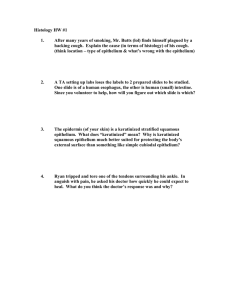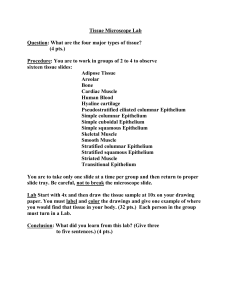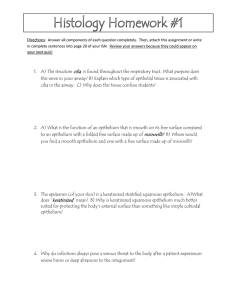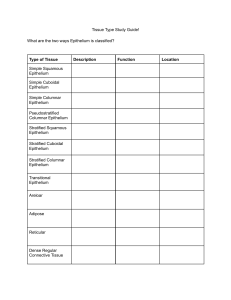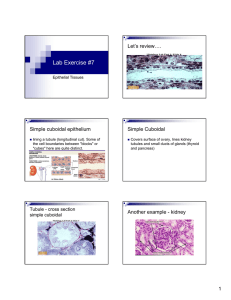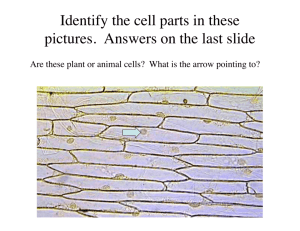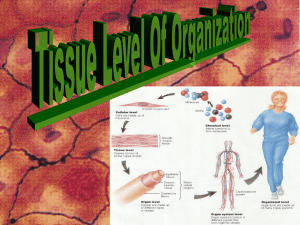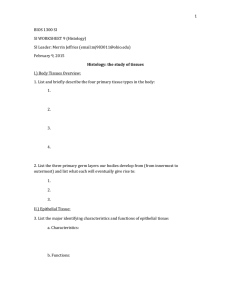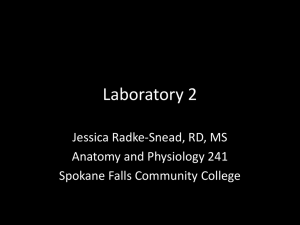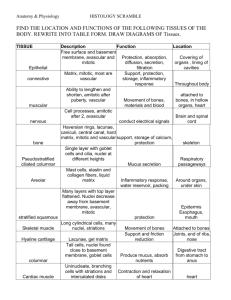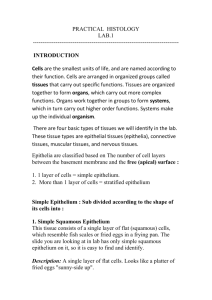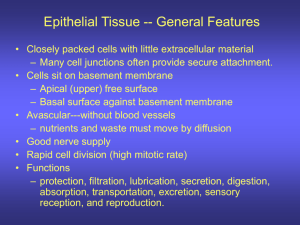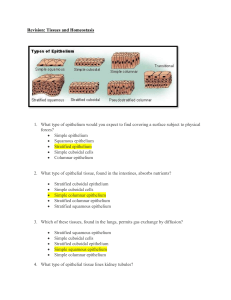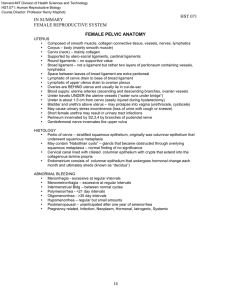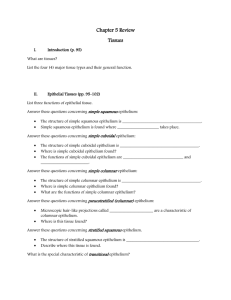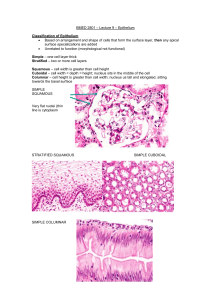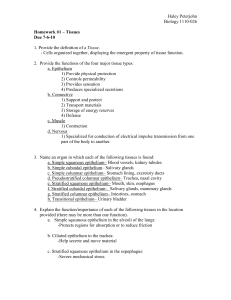Lab 4 Epithelial Tissues
advertisement
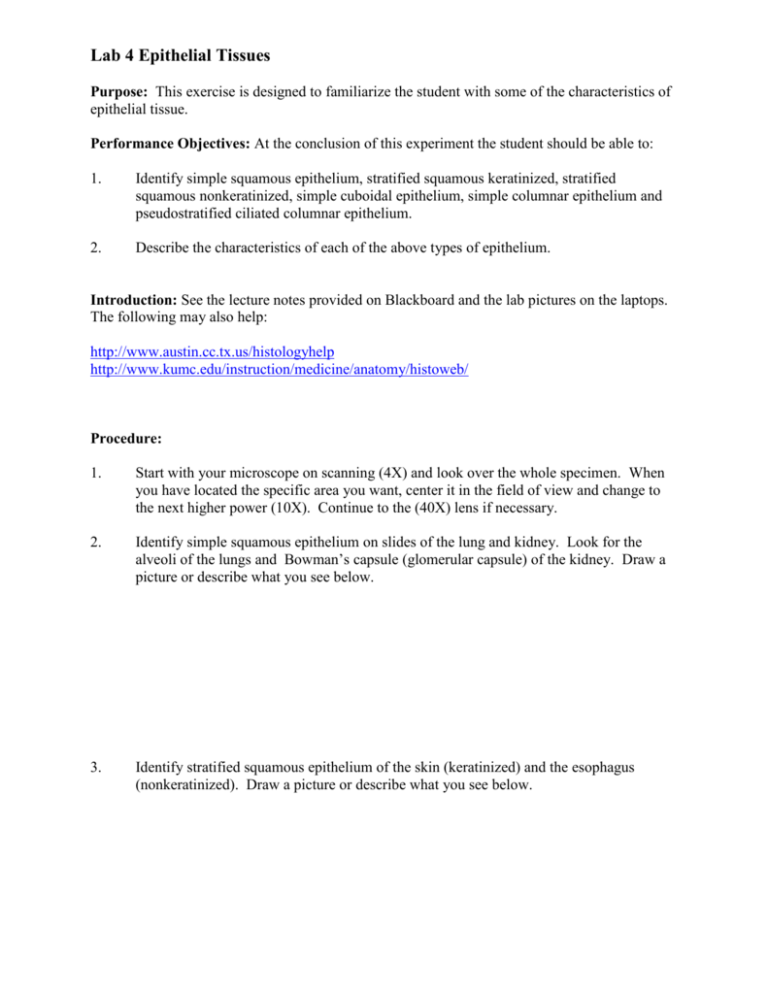
Lab 4 Epithelial Tissues Purpose: This exercise is designed to familiarize the student with some of the characteristics of epithelial tissue. Performance Objectives: At the conclusion of this experiment the student should be able to: 1. Identify simple squamous epithelium, stratified squamous keratinized, stratified squamous nonkeratinized, simple cuboidal epithelium, simple columnar epithelium and pseudostratified ciliated columnar epithelium. 2. Describe the characteristics of each of the above types of epithelium. Introduction: See the lecture notes provided on Blackboard and the lab pictures on the laptops. The following may also help: http://www.austin.cc.tx.us/histologyhelp http://www.kumc.edu/instruction/medicine/anatomy/histoweb/ Procedure: 1. Start with your microscope on scanning (4X) and look over the whole specimen. When you have located the specific area you want, center it in the field of view and change to the next higher power (10X). Continue to the (40X) lens if necessary. 2. Identify simple squamous epithelium on slides of the lung and kidney. Look for the alveoli of the lungs and Bowman’s capsule (glomerular capsule) of the kidney. Draw a picture or describe what you see below. 3. Identify stratified squamous epithelium of the skin (keratinized) and the esophagus (nonkeratinized). Draw a picture or describe what you see below. 4. Identify the simple cuboidal epithelium of the kidney and thyroid. Draw a picture or describe what you see below. 5. Identify simple columnar epithelium and goblet cellof the small intestine. Draw a picture or describe what you see below. 6. Identify pseudostratified ciliated columnar epithelium (trachea). Draw a picture or describe what you see below.
